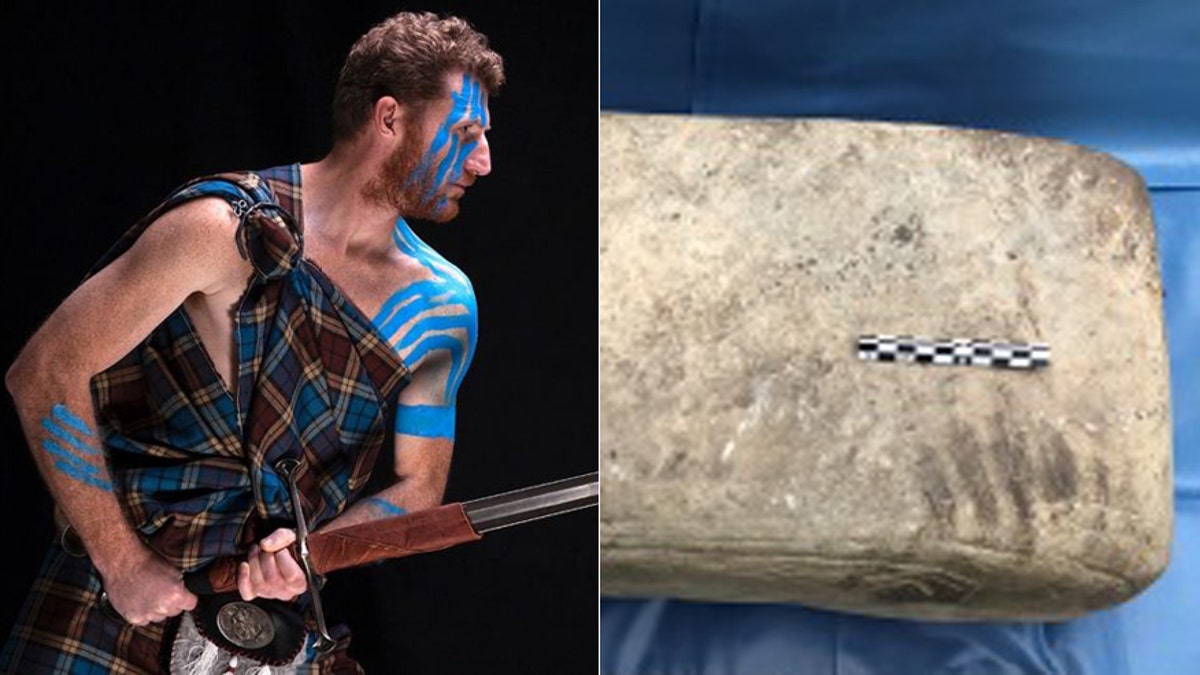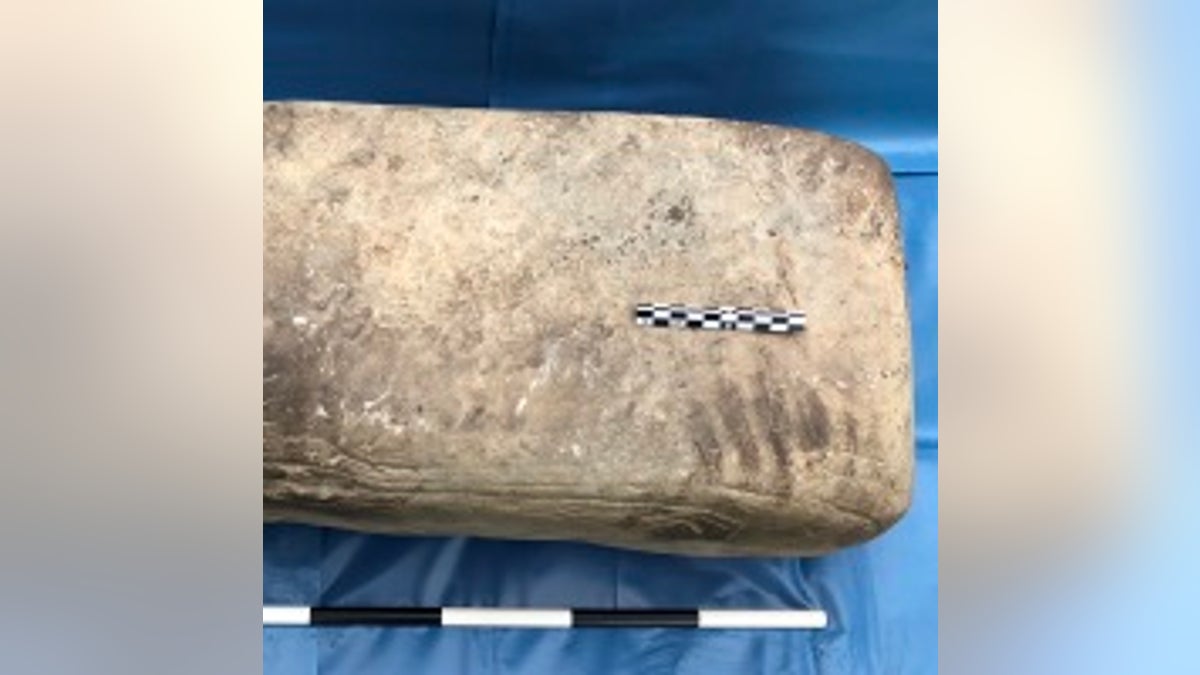
An ancient stone anvil discovered during an excavation on the small island of Rousay offers a rare glimpse into the culture of the Pictish people. (iStock/Stamatoyoshi/University of Bradford/Swandro-Orkney Coastal Archaeology Trust)
Archaeologists on a remote Scottish island have found an unusual artifact from the mysterious ancient Pictish people.
Dubbed “Picti” or “painted people” by the Romans, the Picts were a confederation of tribes in northern Scotland. Much of the Pictish culture, however, remains shrouded in mystery. They have even been described as “Europe’s lost people,” according to the Smithsonian.
However, an ancient stone anvil discovered during an excavation on the small island of Rousay offers a rare glimpse into the Pictish culture. Incredibly, the anvil, which is thought to be 1,500 years old, bears sooty handprints that have survived the centuries. Knee imprints are also on the anvil.
RARE ROMAN COIN DISCOVERED ON REMOTE SCOTTISH ISLAND
The artifact is one of two stone anvils found in what appears to be an ancient coppersmith’s workshop. “The biggest surprise came when we lifted the larger stone anvil and cleaned it; we could see carbon imprints of the smith’s knees and hands,” explained Dr. Stephen Dockrill, co-director of the excavation and senior lecturer in archaeology at the University of Bradford, in a statement.

The ancient stone anvil (University of Bradford/Swandro-Orkney Coastal Archaeology Trust)
The semi-subterranean workshop dates to between the 6th and 9th century A.D. However, experts now face a race against time to find out as much as they can about the site. The workshop is part of a settlement that is gradually being swept away to sea.
“This is an extremely exciting find and we are doing all we can to gather as much information on the site before it is destroyed by the sea,” explained the excavation’s co-director Dr. Julie Bond, senior lecturer in archaeology at University of Bradford. “A handprint is so personal and individual that you can almost feel the presence of the copper smith and imagine what it must have been like working in there all those years ago.”
TEENAGER'S DISCOVERY OF ROMAN TREASURE TROVE DELIGHTS EXPERTS
The site, called the Knowe of Swandro, has a 5,000-year-old Neolithic tomb, Iron Age roundhouses, Pictish buildings, and a Viking settlement and long hall, according to the Swandro-Orkney Coastal Archaeology Trust.
During the current dig at the Knowe of Swandro, archaeologists have also found a small antler handle that may have been part of a knife and a small Pictish painted pebble.
Last year, experts at the site discovered a rare Roman coin, which is believed to date from the mid fourth-century A.D., on the island. The find was notable because the Romans did not occupy Orkney — at its height, the Roman Empire extended as far as the Antonine Wall on the Scottish mainland, about 200 miles south of Rousay.
'TREASURE TROVE' DISCOVERED AT ANCIENT FORT DESTROYED BY VIKINGS
Elsewhere in Scotland, archaeologists have also been making impressive finds. Earlier this year, for example, a treasure trove of ancient artifacts was discovered at a fort that archaeologists believe was razed to the ground by Vikings. Experts at the University of Aberdeen made the remarkable finds at Burghead on Scotland’s northern Moray coast. The fort, which was once used by the Picts, is described as the largest of its kind in Scotland.
Last year, archaeologists and volunteers also found the location of a long-lost early medieval kingdom in southern Scotland.
In 2014, a stunning hoard of ancient silver, believed to have been used as bribes by Romans, was discovered with a metal detector by a teenager in Dairsie, in the Scottish region of Fife.
Experts in Scotland have also used 3-D technology to reconstruct the face of an 18th-century 'witch.'
Follow James Rogers on Twitter @jamesjrogers
